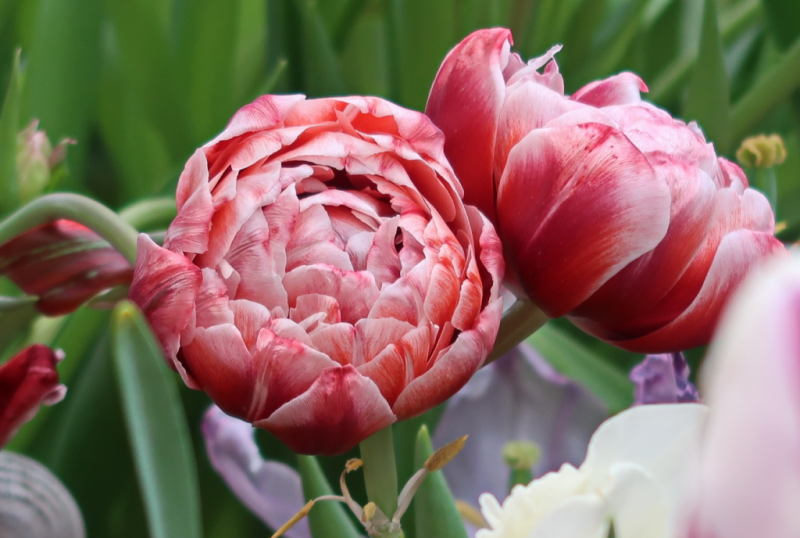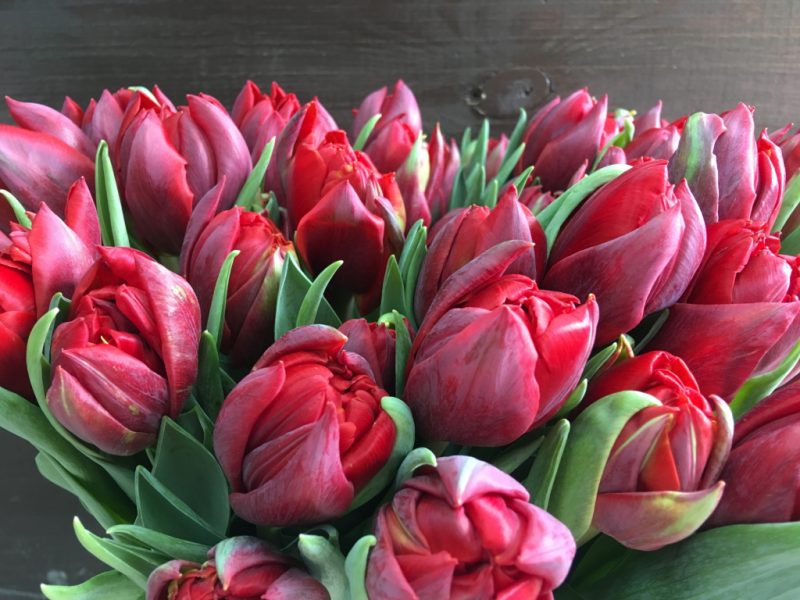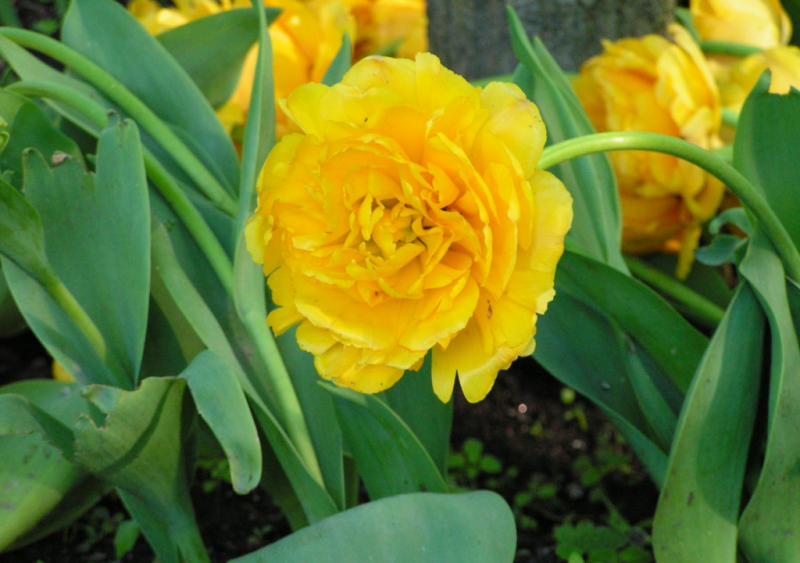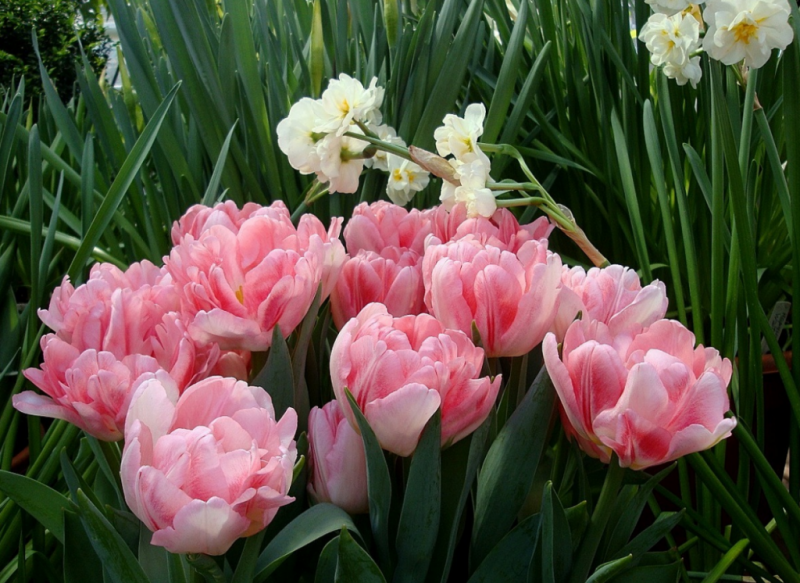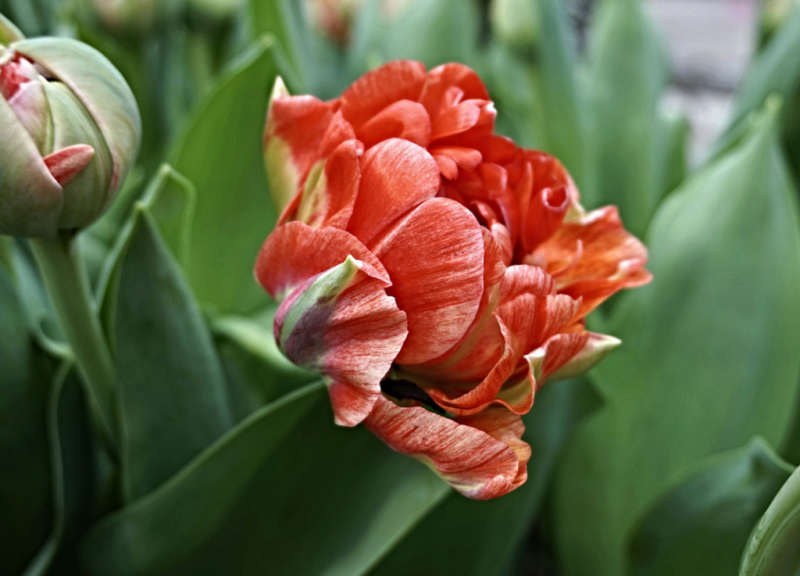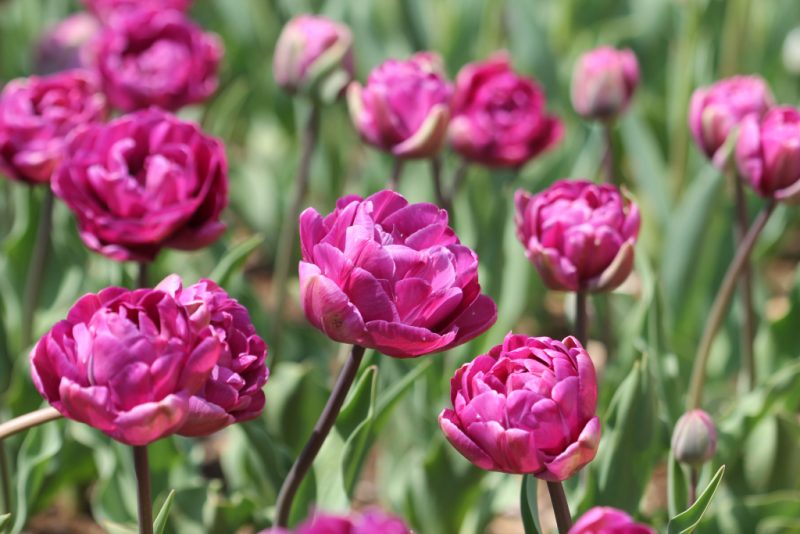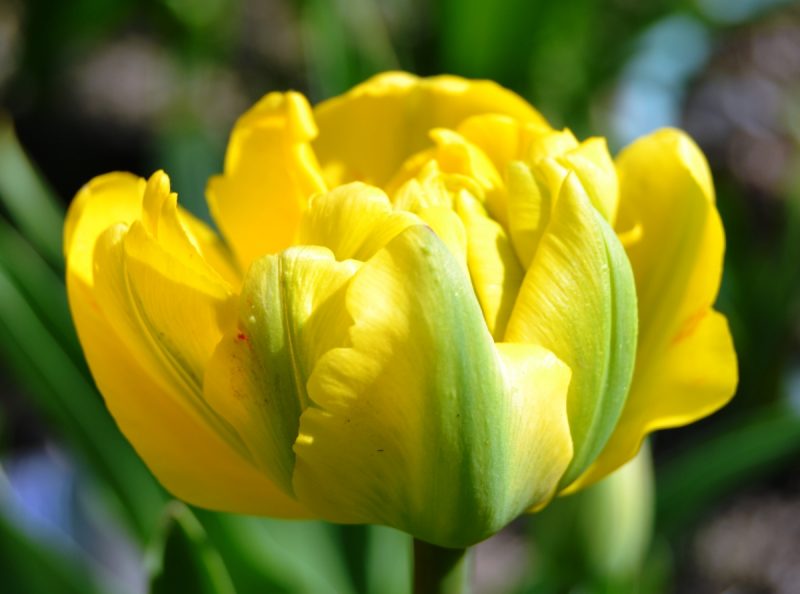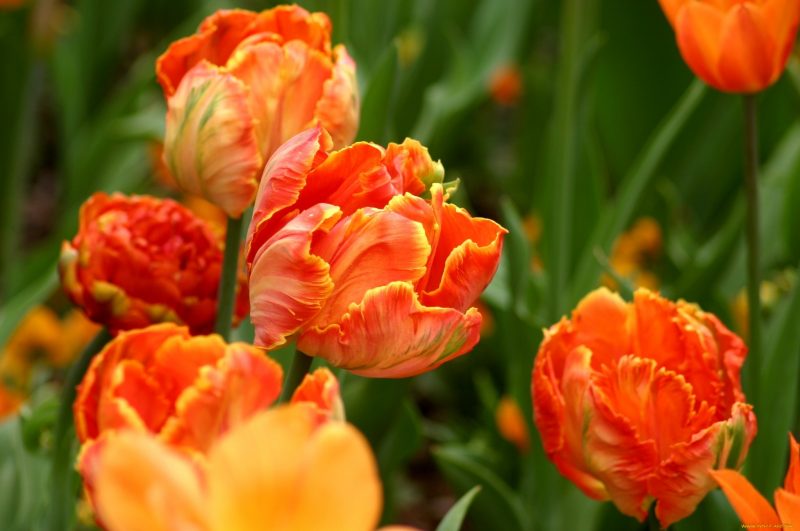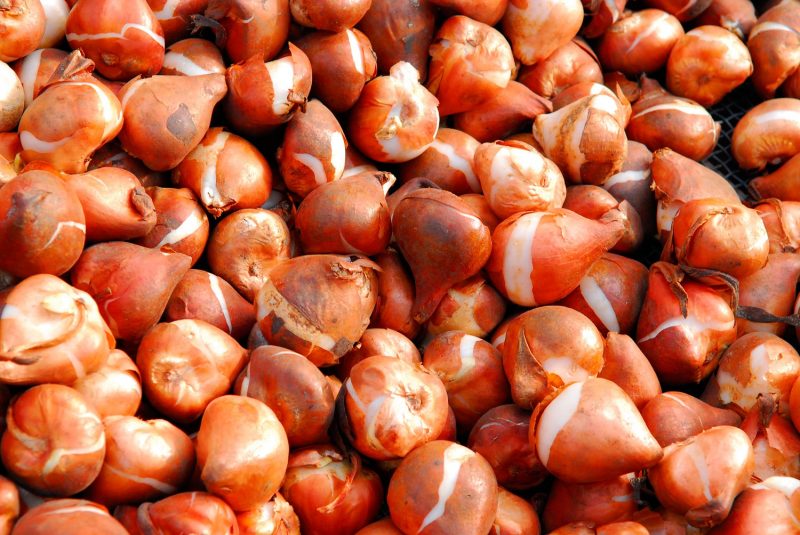Among the many varieties of tulips, terry varieties look particularly impressive, differing in dense and lush buds, like peonies. This similarity was the reason for the origin of another name for these plants - peony tulips.
Material Content:
Description of varieties of flowers
Peony tulips are not new. The first mention of these colors dates back to the 17th century. For the terry shape of the corolla, formed by two, and sometimes more, rows of petals, the plants were called Tulipa Double Early, which means “double tulips”. Now they are often called pion-shaped or terry.
The group of peony tulips is represented by a huge number of varieties, differing:
- shoot height: dwarf (up to 10 cm), medium (up to 35 cm) and tall (from 35 cm);
- large (10-15 cm) cup-shaped or in the form of glasses, buds of various colors;
- the beginning (early, medium and blooming) and the duration (from 2 to 3 weeks) of flowering.
Red varieties of terry tulips have long been popular:
- "Terry red" - one of the unpretentious varieties with large bright cup-shaped buds resembling poppy flowers;
- “Ankle Tom” - characterized by strong low (6-7 cm) peduncles and large buds of deep dark red, with raspberry tint, shade;
- "Abba" - an incredibly beautiful miniature (up to 10 cm) variety of tulips with large and bright goblet buds;
- Miranda is a late-flowering variety with numerous red petals, in green touches, shades.
Exquisitely look pink peony tulips varieties:
- "Finola", the pink petals of which are edged with white or cream;
- Endless Love with petals dotted with mother-of-pearl white touches;
- "Foxtrot" with large flowers formed by pale pink, with wide white stripes in the center, petals;
- "Margarita" with dense spherical buds of pink and lilac shades;
- “Double Red Reading Hood”, 35-40 cm high and large buds of spiky bright scarlet petals with a “torn” edge;
- "La Belle Epoque", characterized by high (50-55 cm) shoots and fawn, with creamy tint in the upper part, flowers.
Against the background of green leaves, yellow peony tulips look spectacular:
- “Yellow Pompone” with huge (up to 15 cm) thick double buds;
- "Akebono" with an unusual color of the petals: a light red spraying over a bright yellow background and a red edging;
- "Monte Carlo", wide open large golden buds in sunny weather and tilting them in the rain;
- Golden Nice with yellow, red strokes, petals.
White peony tulips are characterized by freshness and sophisticated beauty:
- "Dance Line" with large buds of milky white, with raspberry strokes at the edges, colors;
- "Mount Tacoma" with snow-white flowers, preserving freshness for 3 weeks;
- spectacular variety "Cartouche", the petals of which are bordered with bright scarlet or pink border;
- the delicate white buds of Ice Age exude a pleasant aroma.
Breeders annually delight lovers of peony tulips with new hybrids, expanding the line of terry varieties.
Selection of planting material
Tulip bulbs outwardly do not differ from bulbs of non-double varieties, but are more expensive. For this reason planting material is best purchased from trusted private sellers, in specialized stores or nurseries.
When choosing planting material, you should pay attention to the following points:
- the size of the bulbs: large and medium will bloom in the first year after planting, small - a year later;
- the structure of the bulb: it should be dense, juicy, with an even surface, covered with a thin brown, without spots and strokes, scales and a bottom (base), having numerous tubercles from which the roots will develop.
Outdoor landing
In central Russia, pion-shaped tulips are planted in September, at average daytime temperatures of 10 to 15 ° C. Before the onset of cold weather, plants have to take root, which occurs on average over a month.
Bulbs before planting:
- inspect, rejecting suspicious;
- disinfect, keeping in a solution of any fungicide (Fitosporin, Maxim) or pink potassium permanganate for about half an hour.
Determine in advance with the place of landing, choosing dry and sunny areas protected from winds with neutral or slightly acidic (pH 6.5-7) nutrient and drained soil.
2-3 weeks before planting, they prepare the land:
- dig to a depth of 30 cm;
- exempt from weeds;
- make complex mineral fertilizers, the amount of which is determined by the fertility of the soil (an average of 50 grams per square meter), or humus, compost.
Tulips are planted in rows or in small (4-5 pieces) groups that dig at a distance of 20 cm to a depth exceeding the bulb height 3 times:
- for large and medium-sized bulbs - about 10-15 cm;
- for small ones - 5-7.
Bulbs are placed in the recesses, at a distance of 10 to 15 cm, slightly deepening the bottom. Bulbs are covered with earth.
Planting is abundantly watered. When the water is completely absorbed, mulch with peat or sawdust.
Agrotechnics of cultivation and care
Caring for peony tulips is simple and consists in moistening, loosening, weeding and mulching the soil, applying fertilizers and pruning.
- Watering: tulips should be watered in the evening, using water heated in the sun during the day. Humidification is carried out until the end of flowering, completely stopping after the yellowing of the edges of the leaves.
- Weeding, loosening and mulching: obligatory measures taken to prevent disease, damage by pests, moisture and air penetration to the roots of plants.
- Top dressing: terry tulips are fed with complex fertilizers, which are applied: in early spring, when the first sprouts appear, giving preference to mineral additives with a high nitrogen content; during budding, using phosphorus-potassium complexes; after flowering, phosphate fertilizers are applied to help the bulbs accumulate a sufficient amount of nutrients.
- Cropping: to save plant strength, flower stalks with faded buds and yellowed leaves are removed.
A feature of the cultivation of peony tulips is the obligatory annual digging of bulbs.
Methods of propagation of peony tulips
Pion-shaped varieties are propagated by children forming next to the main bulb. After digging, the children are separated and planted separately in the fall. In the first year they will give only leaves. With good care, flowering will come in the second year.
Tulips can be grown from seeds that are purchased in the store or obtained independently. For this, faded buds are not cut, waiting for the formation of fruits in the form of a box.
The seed propagation method is rarely used because it is laborious. It will take 4-5 years to wait for the first flowering. Growing from seeds does not guarantee the reproduction of varietal traits.
Diseases and Pests
With gross violations of agricultural technology and storage conditions, tulips weaken and often get sick.
Fungal infections
The fungus enters the plant tissue through the roots, affecting the bulbs and gradually spreading through the tissues, causing changes in shoots, leaves, flowers and bulbs.
| Disease name | Signs of defeat | |
|---|---|---|
| ground part | bulbs | |
| Fusariosis (wet rot) | • short peduncles; • small buds | • soft structure; • brown spotting on scales; • putrefactive odor. |
| Gray rot | • deformation of all ground parts; • gray-yellow spots on leaves, increasing in size in conditions of high humidity; • gray coating on leaves and shoots. | • wrinkled surface; • brown spotting. |
| Soft rot | • yellowing of the tips of the leaves; • premature drying of the buds. | • pink shade of scales; • watery structure of the bulb; • smell of rot. |
Fungal diseases are dangerous because in the initial stages and with a slight lesion they are poorly diagnosed, which leads to a rapid infection of the plantings.
Preventive measures will help to avoid this:
- soil and bulb cultivation with fungicides after digging and before planting;
- repeated (in early spring, when the first shoots appear, 2 weeks after the second treatment), spraying the ground with a solution of Bordeaux liquid (1%) or euporene (0.5-1%);
- storage conditions: dry cool (15-17 ° C) place.
Virus infections
Among viral diseases, necrotic spotting (August disease) and variegation are most common.
- Necrotic spotting is manifested by the formation of brownish stripes on leaves, shoots and bulbs. Sick specimens gradually dry up. In case of survival, they form deformed buds or do not bloom.
- Variety is diagnosed by the presence of spots and stripes on the petals uncharacteristic for the variety and the subsequent degeneration of the variety.
Tulip virus infections are not treated. Sick plants destroy. Replaceable and soil.
Pests and control measures
Succulent bulbs and leaves of tulips attract insects and rodents.
- With mechanical damage to the bulbs, there is a high probability of infection with an onion tick. As a result of his life, tulips turn yellow and fade. The insect is disposed of with insecticides.
- In conditions of high humidity, tulips are affected by slugs and snails that eat leaves and bulbs. Pests are collected manually or using traps.Destroy folk remedies: sprayed with a concentrated solution of sodium chloride, sprinkle with mustard powder in dry weather. A good prevention is the introduction of ash and mineral fertilizers rich in copper during planting.
- The juice of tulips fell to the taste of aphids, whiteflies and thrips. These pests are controlled by spraying with solutions of potassium permanganate, green soap or Bordeaux liquid. With severe lesions, insecticides are used.
- Bulbs of tulips are fed by ground beetles, bears and mice, which they get rid of with the help of traps, repellers and chemicals (Slug, Thunderstorm). One of the effective preventive measures is planting next to grouse tulips. The smell of these flowers repels rodents.
Bulb collection and storage
After flowering is complete, when more than 30% of the ground part dries, the bulbs are dug up.
Healthy bulbs selected for storage are disinfected for 15-20 minutes in a solution of potassium permanganate or fungicide and placed in a warm (20-25 ° C) dark place for 2 months.
Dried bulbs are placed in boxes or packages of thick paper and stored during the winter in dry cool (15-16 ° C).
Proper storage and compliance with all the principles of growing peony tulips guarantees the lush and plentiful flowering of these amazingly beautiful plants.



